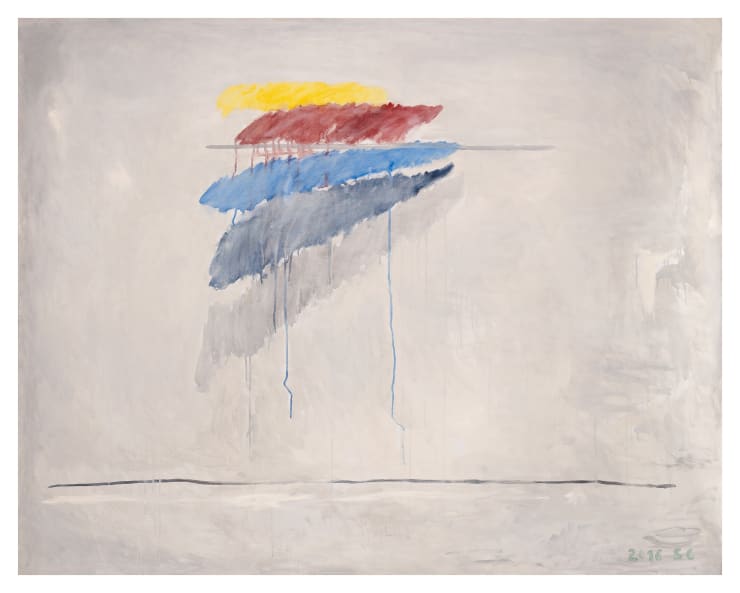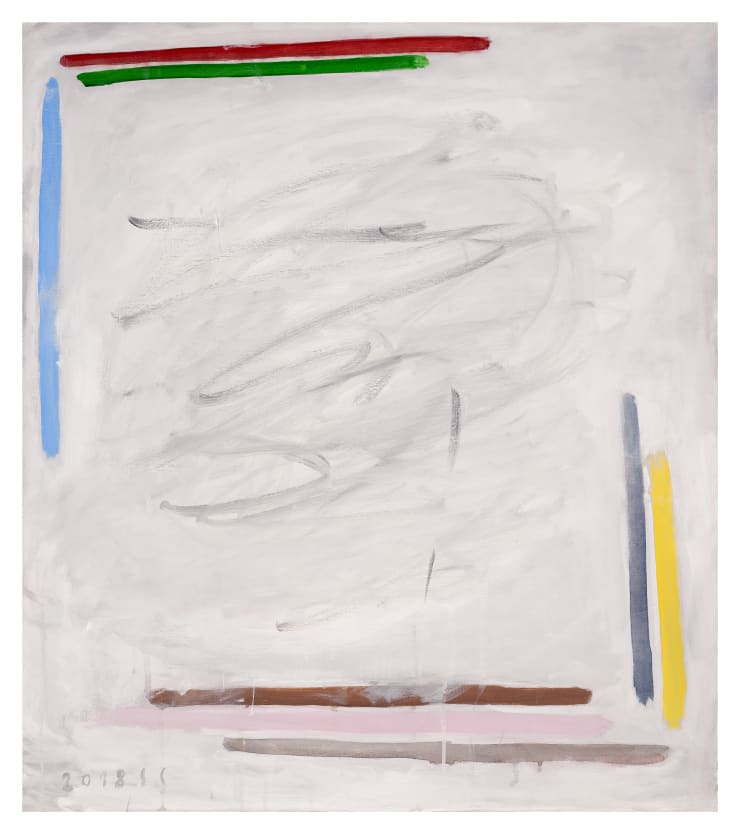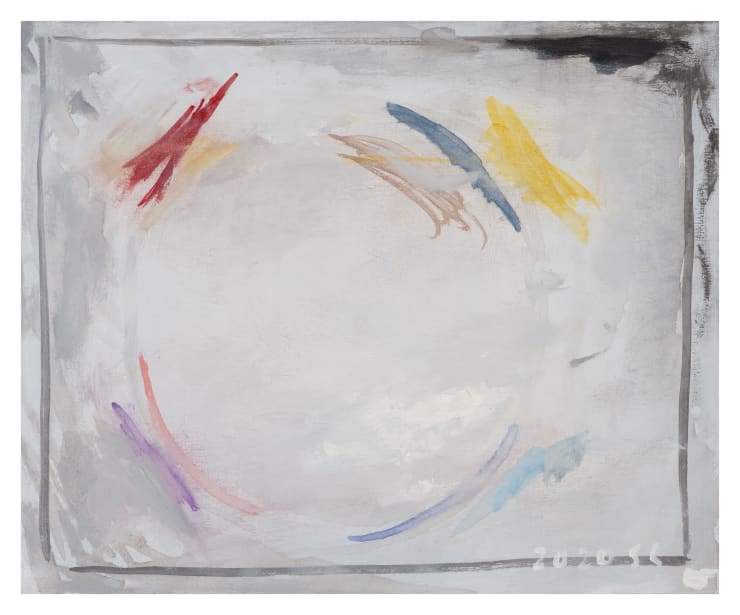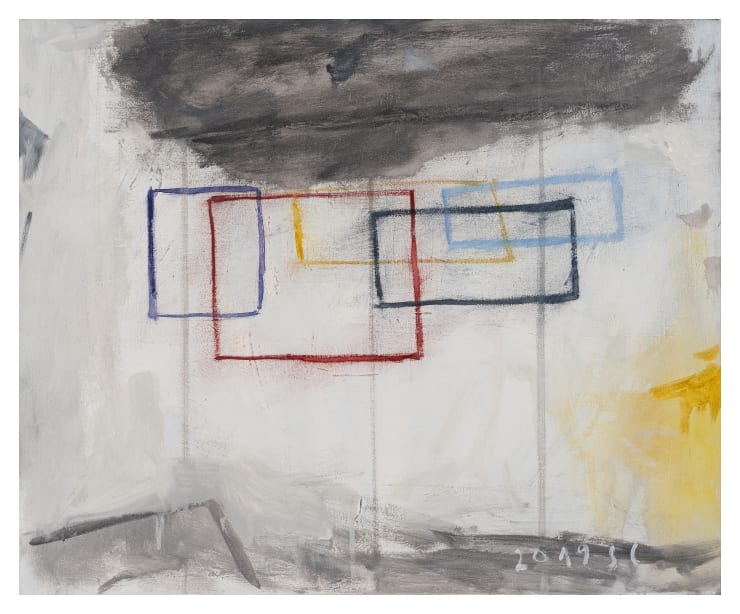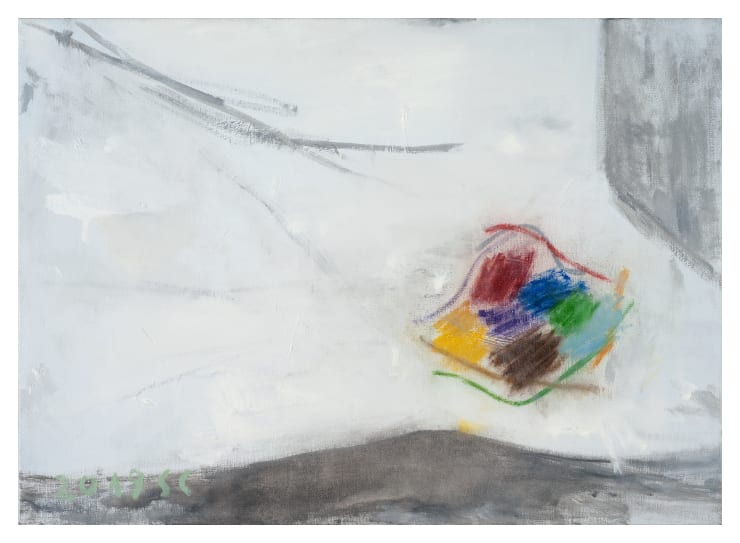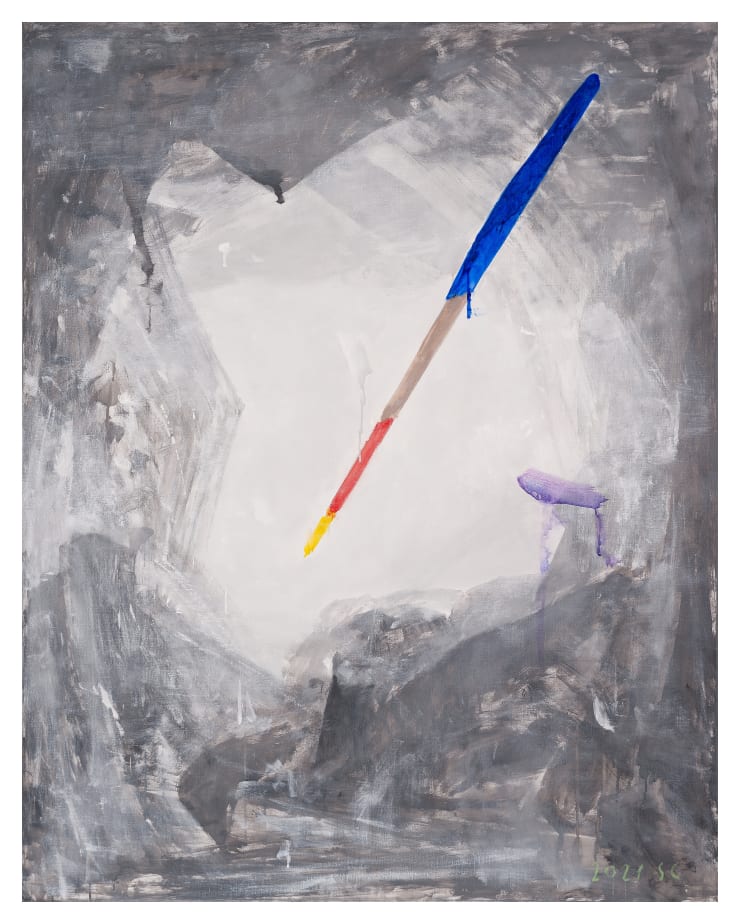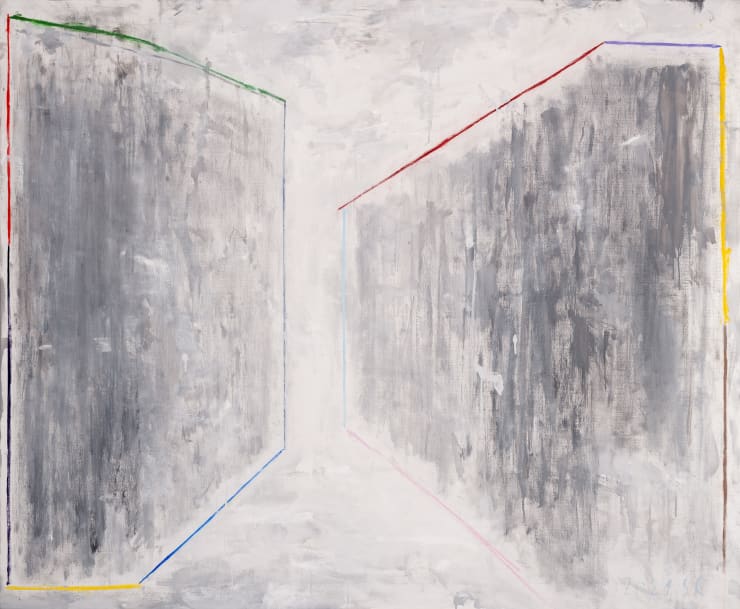SEN CHUNG: Temporality
The Düsseldorf based Korean artist Sen Chung (b.1963) has created in the last two decades an impressively homogeneous and conceptually coherent oeuvre which directs the viewer towards questioning the immanent nature and peculiarity of the universe of painting. His works, oil paintings, drawings, aquarelles, photos present mostly simple forms, partly non-representational – abstract – elements like squares, rectangles, circles or thin, bodiless lines, partly mimetic motives from the nature or – most rarely – human or animal figures, fragments of bodies, sometimes architectural forms or landscape motives. His range of color is very reduced: he is working almost exclusively with palish, washed out greyish or blueish half-tones, often suggesting a glimmering light, which indicates a vision of large, open spaces, eventually foggy, indefinite landscapes. Just this permanent and everywhere present indefinite state of the things, just this undecided character of the representational, mimetic or abstract, not-representational forms, of inklings of spaces, reminiscences of lights and shadows give his painting a metaphorical dimension. Whatever appears at these surfaces, which evoke three-dimensional, immense, unlimited cosmic spaces, the flouting formations suggest universal instability.
Paradoxically, this instability doesn’t provoke any anguish, any intellectual anxiety, any emotional confusion, in contrary: the painterly world of Sen Chung manifests harmony and stillness, calmness, imperturbability. There is an enigmatic contradiction between the seemingly harmonious, transparent, equilibrated composition and the basically insecure, instable, undecided status of things. Sen Chung’s painting reveals a certain feeling of irritating undecidedness and provocative uncertainty as his constellations of not rigorously defined quasi-geometric forms – basically quadrates, rectangles, circles and lines – are floating in a subtly, whirling, undefined vortex. This softly moving, scudding, swirling surface largely contributes to the inability to locate the basically simple compositions in any conventionally interpreted environment or in any rationally constructed – or reconstructed – surrounding; that is the very moment, which evokes irrational, emotional or anecdotical contexts. The constellations of forms are radically dislocated in an undefined space; their insecure and floating existence suggest homelessness and instability, which rouses an unexpected melancholic emotionality, even if these paintings seem to be quiet, impersonal, objective. Although the sophisticatedly developed surface, which serves as background of the quasi-geometrical constructions, doesn’t indicate any illusional three dimensionality, the sensitively elaborated virtual pictorial space suggests deepness and immenseness, as it would be infinite, boundless, immeasurable.
This undefinable immenseness, in which the carefully positioned representational and non-representational forms are floating and creating fragile and ephemeral combinations, rouses the feeling of temporality and suggests a temporal – historical – contextuality in which the things are located to memories, reminiscences, experiences from different times. More concretely, the different geometrical abstract forms and mimetic motives, fragments, signals of visually existing realities will not be located only in the virtual space of the picture – which is intentionally kept in a destabilized and undecided status – but rather in the intelligible temporality, in the context of the passing time, in an imaginary temporal process of past and present events, happenings, moments. In this way, the painting of Sen Chung will confront different reminiscences and memories from the past with recent experiences and observations from the present, which also involves encounters of collective, cultural memories and individual, personal experiences. At this point it seems to be necessary to emphasize Sen Chung’s method of working with cultural references. In some cases, he is introducing texts or visual signals, motives in his pictorial universe, which refer t concrete cultural phenomena or to clearly identifiable events, to movements of Modernism like early geometrical Abstraction, Suprematism, Constructivism, or late-modern Abstract Expressionism and gestural abstraction. These references are embodied both in the shaping of motives and in the painterly elaboration of the surface of his pictures. While the subtle, sensual, pictorial quality of the surface carries the stamp of the deep knowledge of the painterly methods of gestural abstraction of the 1940s and 50s, the simple quadrates, rectangles, circles and lines refer to the great tradition of universalistic and utopian geometrical abstraction of the tens and twenties. Both his pictorial method and his image creation are evidently referential while he involves this intellectual referential contextuality in a melancholic emotionality in which memories and reminiscences of other times became part of our contemporary sensibility.
In this sense, in Sen Chung’s painting seem to be embodied both a critical re-visiting of certain art historian models and concepts of constructing images and a rather emotional, meditative, subjective – in a certain way melancholic – confrontation with the questions of immanent competences of painting as an autonomous territory of specific reflective activity. This explains the double character of his creation: both rational and emotional, analytical and lyrical. At the same time, there is a hidden intellectual quality of certain art historian discourse, a certain hidden radicality of questioning conventional aesthetical models and their intellectual references. It seems to be, that the intellectual artist Sen Chung researches the validity and authenticity of certain – modernist – conventions for the contemporary viewer while he intends to reveal hidden sources and unconventional connotations through his interrogation of painterly methods and their evocations. This also means that Sen Chung doesn’t accept the conventional reading of certain pictorial shaping and their aesthetic contexts but he opens roads of re-thinking and re-connecting different formal systems and compositional methods in order to put them in completely new relations and in interrogative relatedness in order to examine their potential new sense-transformations.
Text © 2021, Lee Eunmi


